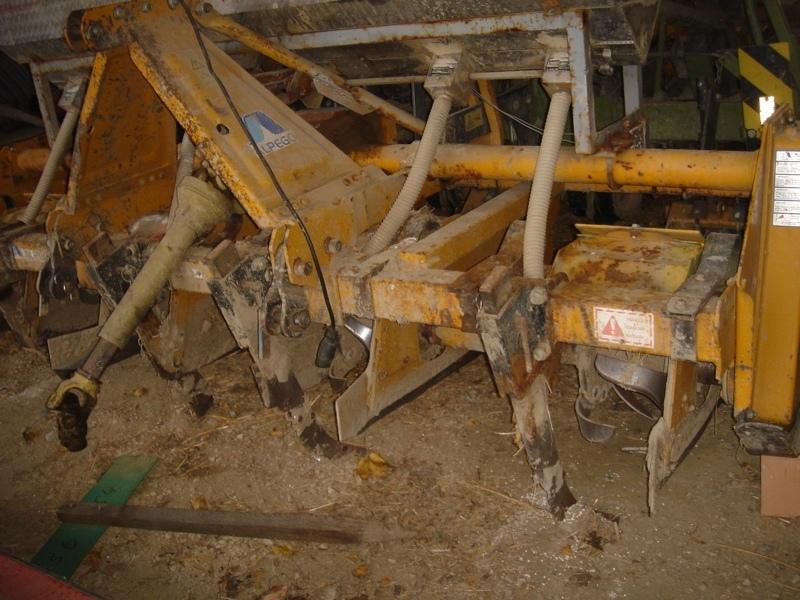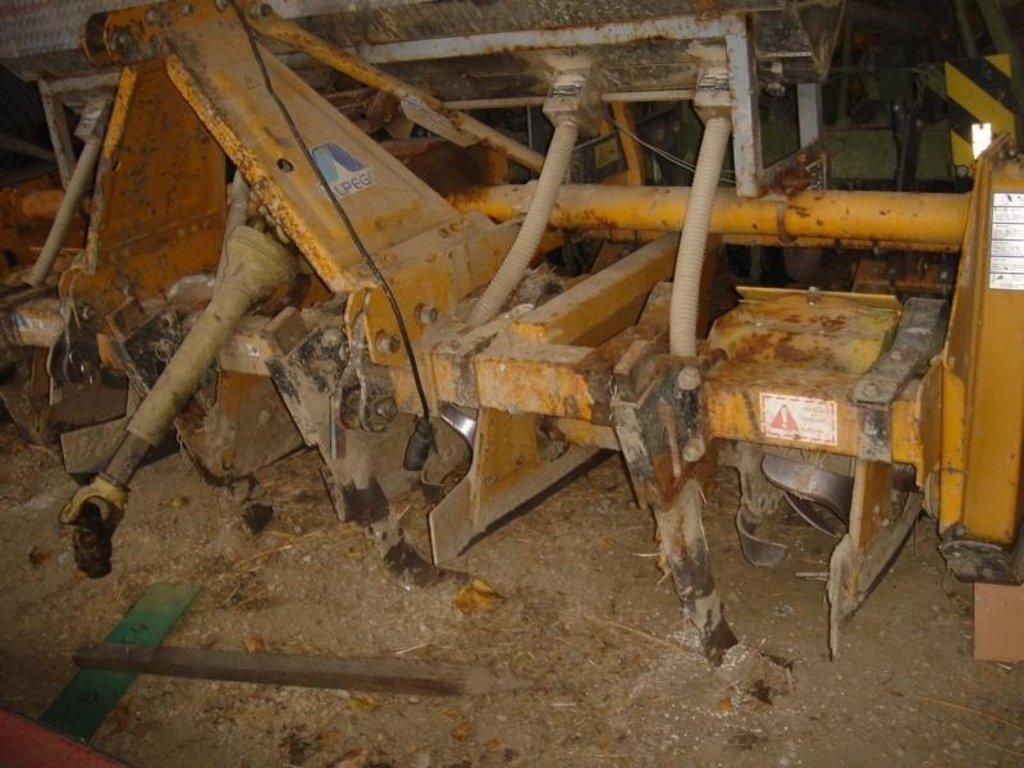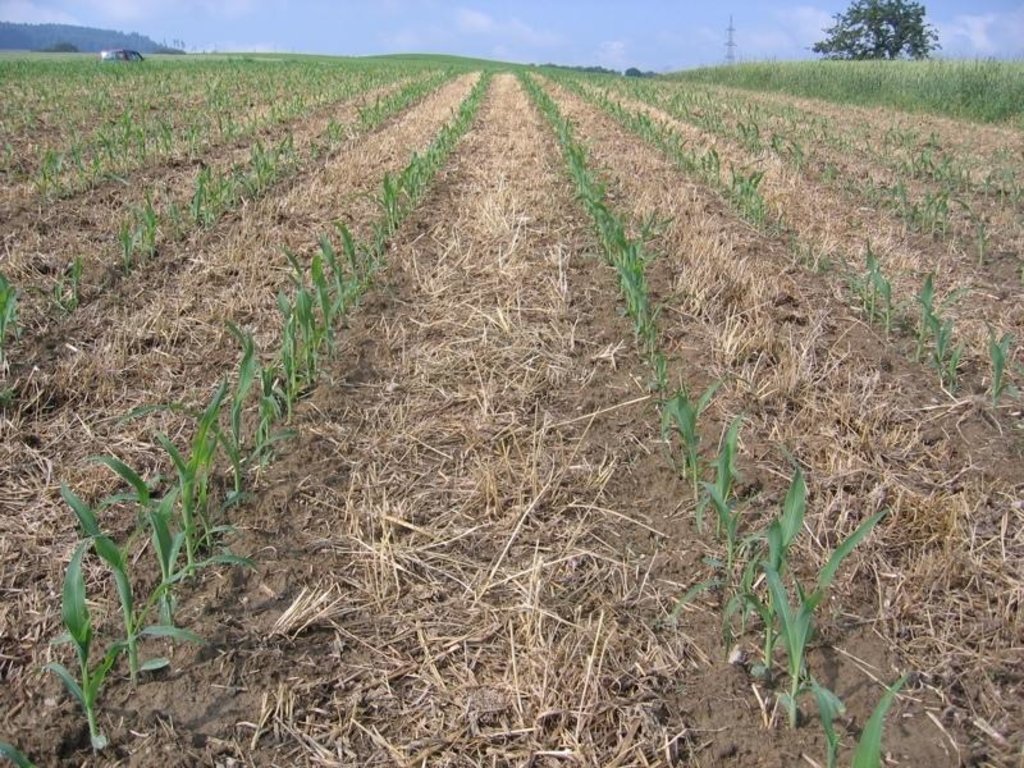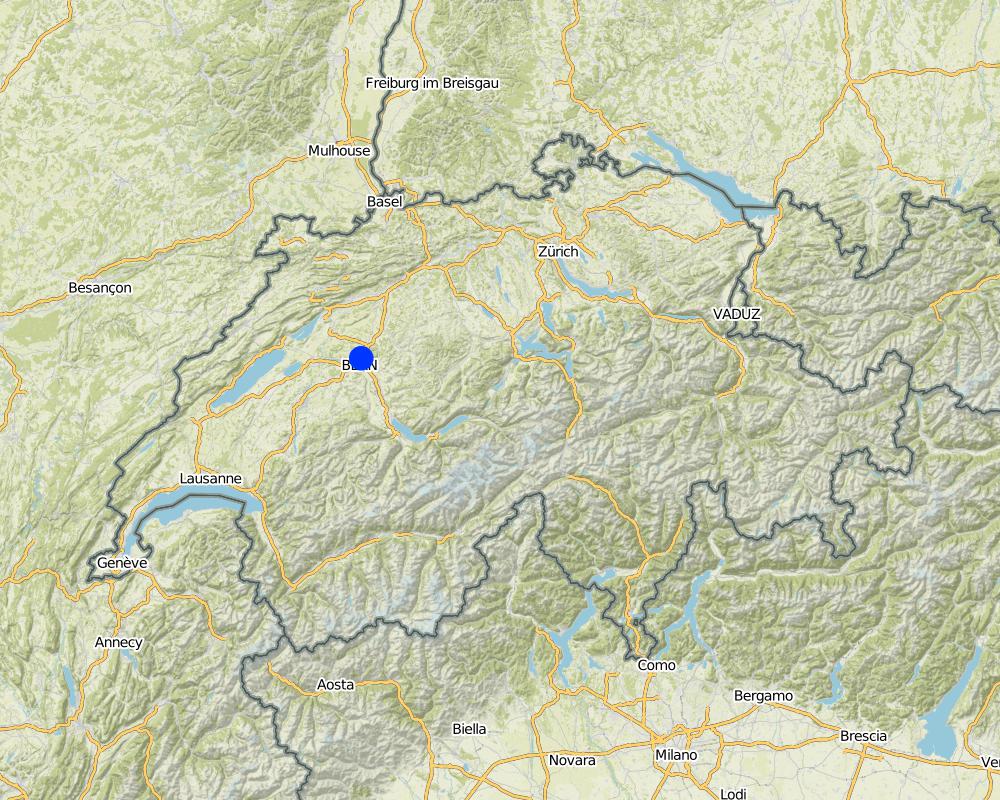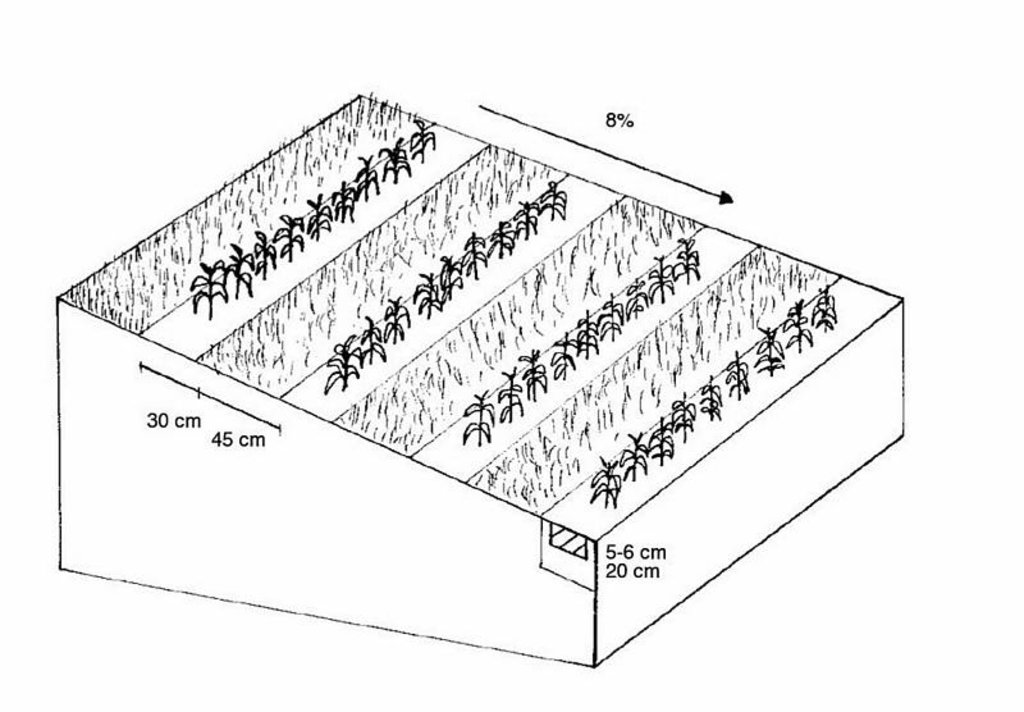Maize strip tillage [Швейцария]
- Создание:
- Обновить:
- Составитель: Nicole Guedel
- Редактор: –
- Рецензенты: Fabian Ottiger, Alexandra Gavilano
Streifenfrässaat
technologies_1009 - Швейцария
Просмотреть разделы
Развернуть все Свернуть все1. Общая информация
1.2 Контактные данные специалистов и организаций, участвующих в описании и оценке Технологии
землепользователь:
Schneider Markus
Schneider Agrarservice
Швейцария
землепользователь:
Bangerter Roland
Швейцария
Название организации (-ий), содействовавших документированию/оценке Технологии (если применимо)
CDE Centre for Development and Environment (CDE Centre for Development and Environment) - ШвейцарияНазвание организации (-ий), содействовавших документированию/оценке Технологии (если применимо)
Bangerter-Gisleren - ШвейцарияНазвание организации (-ий), содействовавших документированию/оценке Технологии (если применимо)
Schneider Agrar-service - Швейцария1.3 Условия, регламентирующие использование данных, собранных ВОКАТ
Составитель и ответственный(-ые) специалист(-ы) согласны с условиями, регламентирующими использование собранных ВОКАТ данных:
Да
2. Описание Технологии УЗП
2.1 Краткое описание Технологии
Определение Технологии:
Maize strip tillage is a technology used for corn cultivation. It cultivates only thoses stripes in which the seed is added to.
2.2 Подробное описание Технологии
Описание:
Maize strip tillage is a soil-conservation method used in crop production. First of all the grass in the area needs to be prepared by splattering round-up some 3-10 days prior seeding. Then the actual maize strip tillage machine carves a stripe and the seed are inserted within this 30 cm strip. At the same time fertilizer is added on these cultivated stripes. Between those cultivated stripes the mulch-grass stripes (45cm) are unmechanised and protect the soil by increasing its stability. The work is done within one working unit compared to the traditional technique whereas the farmer needs to drive for each working step separately.
There are some clear ecological advantages using this technology. Like in a minimum tillage system the stability of the soil is enhanced.
Due to these mulch-stripes the matrix of the soil is more complex and therefore the stability is better especially during harvest in September. The interviewed farmer said compaction would occur less and the risk of soil erosion is decreasing. Especially in hilly areas the technology is suitable since soil erosion is a problems when using a plough. Another advantage is the better soil structure due to the mulch stripes and the minimal tillage ensures that the soil is more stable.
A high level of knowledge about the natural environment is a required when adopting this technology. On one hand, the farmer must time the date for seeding adequately to the natural conditions (not too humid). On the other hand, the farmer has to apply Glyphosphat one to three times after the seeding in order to guarantee an optimal growth period for the corn.The interviewed farmer found it problematic to use this amount of Glyphosat and he was not sure about the effects in the water. The timing to start seeding with this technology may be later cause corn is sensitive towards rival plants, low temperatures and humidity. When adopting the technology the farmer needs to have a certain level of knowledge and experience in order to guarantee a sound harvest.
This technology is applied in the village Seedorf (Canton Bern) after the farmers made positive experiences and if they see the economic advantages too. Generally there is only one work step needed for the seeding which lowers the costs compared to the traditional technology with about a third. Furthermore the subsidies of the canton of Berne enables farmers to apply this technology for the first 5 years. In this cycle the areas are usually left with grass first, second cultivated with corn (using maize strip tillage), then sugar beets and after all two years of cereals (wheat and rye) before the cycle starts again.
2.3 Фотографии, иллюстрирующие Технологию
2.5 Страна/ регион/ места, где применяется Технология, информация о которых собрана в данной Анкете
Страна:
Швейцария
Административная единица (Район/Область):
Seedorf
Более точная привязка места:
Bern
Пояснения:
27.2 km2 are owned by the farmer whereas he is applying the technology on 5 km2. He said that he is hired as a contract worker and applies the technology on approximately 90 km2. Total area covered by the SLM Technology is 90 km2.
Map
×2.7 Внедрение Технологии
Пояснения (тип проекта и т.д.):
A neighbouring farmer adapted the technology and after the first successful harvest Roland Bangerter bought a machine too some 5 years ago and started apply this technology.
3. Классификация Технологии УЗП
3.2 Текущий(-ие) тип(-ы) землепользования на территории, где применяется Технология

Пахотные угодья и плантации
- Однолетние культуры
Ежегодный урожай - Уточните культуры:
- зерновые культуры - кукуруза
- зерновые культуры - рожь
- зерновые культуры - пшеница (яровая)
- корнеплоды / клубнеплоды - сахарная свекла
Пояснения:
Major land use problems (compiler’s opinion): soil erosion in hillside areas
Major land use problems (land users’ perception): soil degradation in general
3.5 Категория УЗП, к которой относится Технология
- Минимальная обработка почв
- мероприятия по влагозадержанию и снижению эрозии почв на склонах
3.6 Мероприятия УЗП, выполняемые в рамках Технологии

Агрономические мероприятия
- A1: Растительный/ почвенный покров
Пояснения:
Main measures: agronomic measures
Type of agronomic measures: cover cropping, retaining more vegetation cover, mulching, manure / compost / residues, rotations / fallows, minimum tillage
3.7 Основные проблемы деградации земель, на решение которых направлена Технология

водная эрозия почв
- ВЭп: поверхностная эрозия/смыв верхних почвенных горизонтов
- ВЭл: овражная эрозия / оврагообразование

ухудшение физических свойств почв
- Фу: уплотнение

биологическая деградация
- Бр: сокращение растительного покрова
Пояснения:
Main type of degradation addressed: Wt: loss of topsoil / surface erosion, Pc: compaction
Secondary types of degradation addressed: Wg: gully erosion / gullying, Bc: reduction of vegetation cover
Main causes of degradation: crop management (annual, perennial, tree/shrub) (the use of plough increases the danger of soil erosion)
3.8 Предотвращение и снижение деградации земель, или восстановление нарушенных земель
Укажите цель Технологии по отношению к деградации земель :
- предотвращение деградации земель
- снижение деградации земель
Пояснения:
Main goals: mitigation / reduction of land degradation
Secondary goals: prevention of land degradation
4. Технические характеристики, мероприятия по практической реализации, вложения и стоимость
4.1 Технический рисунок, иллюстрирующий Технологию
Спецификация (пояснения к техническому рисунку):
Technical knowledge required for field staff / advisors: high
Technical knowledge required for land users: low
Main technical functions: improvement of topsoil structure (compaction), increase of infiltration
Secondary technical functions: improvement of ground cover, increase in organic matter
Manure / compost / residues
Material/ species: mulch stripes
Rotations / fallows
Remarks: a cultivation cycle of 5 year is needed
4.3 Мероприятия, необходимые для начала реализации
| Деятельность | Время (сессия) | |
|---|---|---|
| 1. | Buying a 120 PS tractor | |
| 2. | Buying a machine for maize strip tillage | |
| 3. | buying a sowing machine |
4.4 Вложения и затраты, необходимые для начала реализации
| Опишите затраты | Единица | Количество | Затраты на единицу | Общая стоимость на единицу | % затрат, оплаченных землепользователями | |
|---|---|---|---|---|---|---|
| Оборудование | 120 PS tractor | Farm | 1,0 | 126000,0 | 126000,0 | 100,0 |
| Оборудование | Machine for maize strip tillage | Farm | 1,0 | 165000,0 | 165000,0 | 100,0 |
| Оборудование | Sowing machine | Farm | 1,0 | 12600,0 | 12600,0 | 100,0 |
| Общая стоимость запуска Технологии | 303600,0 | |||||
| Общие затраты на создание Технологии в долларах США | 303600,0 | |||||
4.5 Поддержание/ текущее обслуживание
| Деятельность | Сроки/ повторяемость проведения | |
|---|---|---|
| 1. | Adding some round-up on the field one week before technology is applied | 1 |
| 2. | Applying technology maize strip tillage | 1 |
| 3. | Adding herbicide on the mulch stripes | 1-3 |
| 4. | Harvest of corn | 1 |
6. Воздействия и заключительные положения
6.7 Сильные стороны/ преимущества/ возможности Технологии
| Сильные стороны/ преимущества/ возможности по мнению составителя или других ключевых специалистов |
|---|
|
Prevention of erosion How can they be sustained / enhanced? Maintain green cover. |
|
Improvement of soil quality (fertility, organic matter, moisture retention, soil structure) How can they be sustained / enhanced? Ensure that cover vegetation doesn’t compete with the vines; improve soil properties by applying mentioned agronomic measures. |
|
Contribution to a better balanced and more stable ecosystem (with living space for a wider range of organisms) How can they be sustained / enhanced? Specific management of cover crops (alternating treatment of inter-rows; find solutions to replace application of herbicide). |
| In the long-term economically beneficial because of cutting costs of restoration of soils and fertility loss after heavy erosion events. |
| Possibilities of farm income increase through marketing wine under the ‘vinatura’ label, certifying ecologically produced wine. |
6.8 Слабые стороны/ недостатки/ риски Технологии и пути их преодоления
| Слабые стороны/ недостатки/ риски по мнению составителя или ответственных специалистов | Возможные пути их преодоления/снижения? |
|---|---|
| General competition of water and nutrients depending on climate, soil depth and species of cover vegetation | Eliminate/reduce competitive effect of cover vegetation by cutting/mulching vegetation or ripping/ploughing soil. |
| Application of herbicides around vines because of undesirable vegetation in proximity of vine | Find alternative solutions, or minimise application of herbicides. |
7. Справочные материалы и ссылки
7.1 Методы сбора/ источники информации
7.2 Ссылки на опубликованные материалы
Название, автор, год публикации, ISBN:
Güdel N . Boden- und Wasserkonservierung in Schweizer Rebbergen. Ein Beispiel im Rahmen von WOCAT. Unpublisheddiploma thesis.. 2003.
Где опубликовано? Стоимость?
Centre for Development and Environment (CDE), University of Berne
Ссылки и модули
Развернуть все Свернуть всеСсылки
Нет ссылок
Модули
Нет модулей


